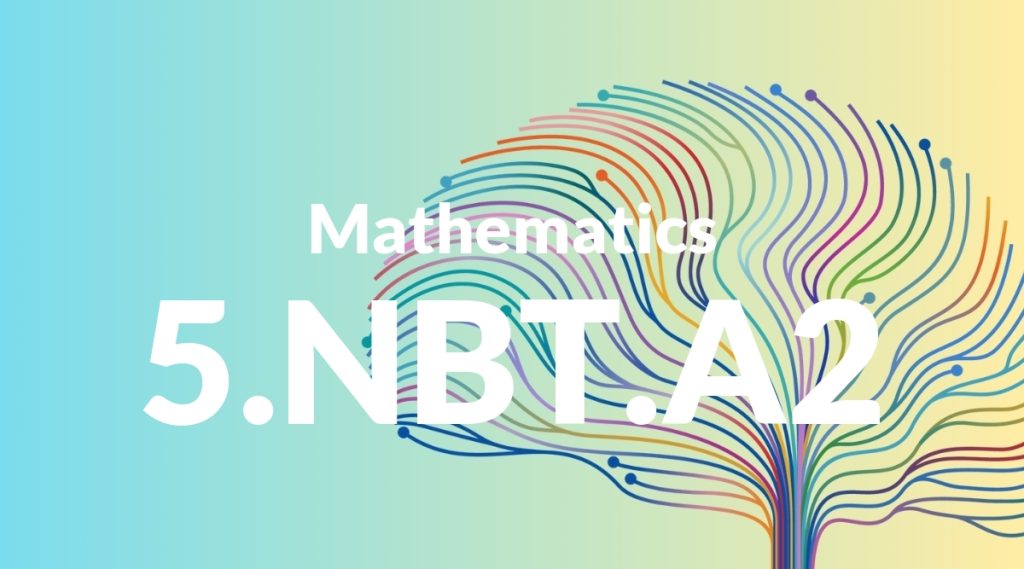Standard: 5.NBT.A2 – Explain patterns in the number of zeros of the product when multiplying a number by powers of 10, and explain patterns in the placement of the decimal point when a decimal is multiplied or divided by a power of 10. Use whole-number exponents to denote powers of 10.
Grade level: Grade 5
Subject: Mathematics
Domain: Number & Operations in Base Ten
Teacher Overview
This standard helps students understand the predictable patterns that occur when multiplying and dividing by powers of 10. It is crucial for developing number sense and for future work with scientific notation and algebra. Students need to be comfortable with basic multiplication and division, place value concepts, and have a preliminary understanding of exponents.
Mastering this standard prepares students for more advanced topics such as scientific notation and algebraic manipulation involving exponents.
Common Misconception 1
Some students may incorrectly believe that multiplying by powers of 10 simply involves adding zeros to the number, without recognizing the shift in place value.
Intervention 1
Use place value charts and manipulatives to visually demonstrate how digits shift to the left when multiplying by powers of 10.
Common Misconception 2
Another common misconception is that dividing by powers of 10 is the same as multiplying by powers of 10, leading to confusion in calculations.
Intervention 2
Provide clear, visual examples and practice problems that differentiate between the effects of multiplying and dividing by powers of 10.
Prerequisite Knowledge
Students should have a solid understanding of basic multiplication and division, familiarity with place value concepts, and an introduction to exponents.
Subsequent Knowledge
After mastering this standard, students will be able to apply their understanding of powers of 10 to more complex mathematical concepts, such as scientific notation and algebraic expressions.
Instructional Activities
- Use place value charts to multiply and divide numbers by powers of 10.
- Interactive games that involve shifting digits left or right based on powers of 10.
- Real-world problem-solving scenarios involving metric conversions.
- Group activities where students create their own examples of multiplying and dividing by powers of 10.
- Use of digital tools and apps to visualize the effects of multiplying and dividing by powers of 10.




